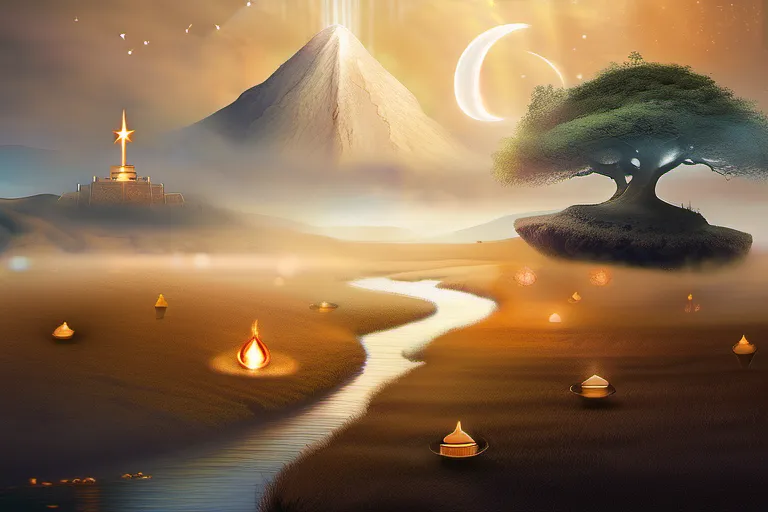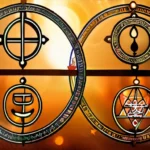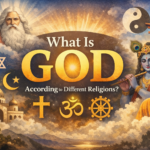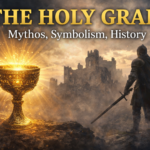Explore the origins, beliefs, and practices of the world’s oldest religions, from Shamanism to Zoroastrianism.
Delve into the fascinating history of religion as we explore the ancient faiths that have shaped human civilization. From the mystical practices of Shamanism to the ethical teachings of Zoroastrianism, discover the oldest religions and their enduring impact on our world today.
The Origins of Shamanism
Imagine peering into the mists of time, trying to piece together the puzzle of human spirituality. What if I told you that one of the oldest religions, dating back to prehistoric times, could hold answers to questions we still ponder today? Shamanism, the ancient practice intertwined with early human societies, invites us on a journey through history and imagination.
In the heart of shamanic traditions lies the idea that there are no boundaries between the physical and spiritual realms. Shamans act as intermediaries, or mediators, between these worlds. They communicate with spirits, heal ailments, and guide souls through this mysterious journey called life. It’s a practice that has been passed down through generations, adapting to different cultures but maintaining its core essence.
Consider the metaphor of an old tree, whose roots delve deep into the earth and branches stretch towards the sky. Just as the tree connects both realms, shamans bridge the gap between humanity and the spiritual world. Their rituals often involve soul journeys, where they enter altered states to seek guidance or healing. These practices are not just about belief; they are lived experiences that shape entire communities.
Today, as modern society grapples with existential questions, the wisdom of shamanic traditions offers a profound perspective. In an era dominated by technology and rationality, the holistic approach of shamanism—embracing both physical and spiritual dimensions—resonates deeply. It challenges us to rethink our relationship with nature and the unseen forces that influence our lives.
As we explore the origins and practices of shamanism, we find ourselves not just learning about an ancient religion but also reconnecting with aspects of spirituality that have been overshadowed by more structured belief systems. The journey through shamanic traditions is one of discovery, where the past meets the present in a rich tapestry of beliefs and practices.
Zoroastrianism: The Ethical Revolution
Zoroastrianism, often referred to as one of the world’s oldest religions, offers a profound exploration into ethical living and spiritual purity. Imagine walking through time to uncover the roots of this ancient faith. Where does Zoroastrianism fit in the timeline of world religions? According to scholars, it emerged around the 6th century BCE in what is now modern-day Iran, providing a framework for beliefs that have resonated across centuries.
The core teachings of Zoroastrianism revolve around the concept of good thoughts, words, and deeds. It emphasizes the idea that every individual has the power to choose between good and evil. This ethical revolution can be seen as a beacon of moral clarity in an often murky world. How does this belief system shape one’s daily life?
In Zoroastrianism, there are two fundamental forces at play: Angra Mainyu (Evil Spirit), representing darkness and destruction, and Ahura Mazda (Wise Lord), embodying light and wisdom. This dualistic framework invites followers to constantly strive towards righteousness and goodness. The practice of good thoughts, words, and deeds is not just a mantra but an active effort to align oneself with the divine will.
The religion also places significant emphasis on fire worship. Fire symbolizes purity and truth, serving as both a sacred element and a central object of veneration. Followers believe that fire purifies the soul and connects them to the divine. This practice has been deeply influential in shaping religious rituals and ceremonies.
Zoroastrianism’s impact extends beyond its geographical origins. Many ethical principles, such as environmental stewardship and social justice, can be traced back to Zoroastrian teachings. The emphasis on living a virtuous life without harming others has influenced other religions and philosophies, making it a rich source of moral wisdom.
As we explore the ancient faiths that have shaped our world, Zoroastrianism stands as a testament to ethical revolution and spiritual purity. It challenges us to reflect on our own lives and consider how we can embody these values in our daily existence. Could this ancient religion hold the key to modern-day ethical dilemmas?
The Spread of Ancient Faiths
Imagine if you could trace the footsteps of ancient faiths, watching them spread like ripples on water across continents and cultures. From the sacred groves of Central Asia to the fertile plains of Mesopotamia, these beliefs have left indelible marks on human history. How did these ancient religions manage to travel so far and still hold such sway over the hearts and minds of people?
The spread of ancient faiths is a fascinating journey through time, akin to following a map drawn by the hands of gods themselves. Consider Shamanism, the oldest recorded religion in human history. Originating from the forests and steppes of Eurasia, this practice involves communication with spirits and ancestors through trance states. It’s like a cultural thread that weaves its way through societies, adapting to new environments while maintaining core beliefs.
From there, we can see how these faiths influenced each other, much like rivers merging into one vast ocean. As Zoroastrianism, the ethical revolution we explored in the previous chapter, spread from Persia (modern-day Iran), it began to shape neighboring cultures with its emphasis on moral choices and dualism. This influence is a testament to how ancient faiths can evolve and transform as they travel.
One might wonder, how did these religions manage to maintain their essence while adapting to new environments? It’s akin to planting seeds in different soils; each environment may change the appearance of the plant, but its roots remain true. These ancient faiths, with their deep spiritual practices and ethical teachings, have been like sturdy oaks that bend with the wind yet stand strong against the storms.
The geographical expansion of these ancient faiths has not only enriched the tapestry of human spirituality but also shaped the very fabric of societies they touched. It’s a story of resilience, transformation, and shared heritage, woven together by the threads of time and culture.
Ancestor Worship: A Global Phenomenon
Imagine stepping back in time, to the dawn of human civilization when people’s lives were intertwined with nature and the spirits of their ancestors. Ancestor worship has been a common thread among many ancient religions, serving as a bridge between the past and present. How did this practice shape our understanding of death and the afterlife? Let’s delve into its profound influence.
Consider Ancestor Worship as a living connection to the past, where spirits were believed to play an active role in the lives of their descendants. In ancient cultures such as those found in China, Africa, and parts of Europe, ancestors were revered for their wisdom and influence on the living. These spirits could grant blessings or bring misfortune, making rituals and offerings crucial practices.
For instance, in Chinese traditions, ancestor worship is deeply ingrained during festivals like Chung Yeung. Families gather to pay respects at ancestral graves, placing food, flowers, and incense as a sign of respect. These acts serve not only as a memorial but also as a reminder that the dead are ever-present in our lives.
In African societies, ancestor veneration is integral to social structures and religious beliefs. The spirits of ancestors are seen as guiding forces, ensuring prosperity and success within families and communities. Rituals such as libations (pouring drinks) and sacrifices are performed to honor these spirits and maintain a harmonious relationship with them.
Even in European folklore, the concept of ancestor worship can be traced back through stories like those of Pantheism and the belief in the land spirits, or Trolls, who were often ancestors transformed into supernatural beings. These beliefs not only provided a sense of continuity but also offered explanations for natural phenomena.
Ancestor worship, therefore, is more than just a religious practice; it’s a cultural fabric woven through generations. It reminds us that even in death, the legacy of our ancestors lives on, influencing our daily lives and shaping our beliefs about mortality and beyond. As we explore further into ancient religions, it becomes clear that this practice has left an indelible mark on human history.
The Role of Rituals in Ancient Religions
Imagine stepping back into time, to a world where rituals were the heartbeat of society—where every gesture and act was imbued with meaning. In ancient religions, rituals weren’t just practices; they were a bridge between the physical and spiritual realms. Let’s delve into how these sacred ceremonies and daily routines shaped the lives of our ancestors and continue to resonate in modern spirituality.
Rituals in ancient religions often served as a way to connect with the divine. For instance, consider the elaborate ceremonies performed by shamans in indigenous cultures. These rituals were not merely performances but a means to communicate with spirits and ancestors, seeking guidance or healing. How can we view our own religious practices today without recognizing their roots in these profound ancient traditions?
From daily offerings in the temples of ancient Egypt to the complex Zoroastrian fire rituals, each act had a purpose. These rituals weren’t just about worshipping; they were about maintaining harmony with the universe and ensuring one’s place within it. Could it be that our modern mindfulness practices or even our personal prayers are echoes of these ancient spiritual disciplines?
The significance of rituals lies not only in their historical context but also in their psychological impact. They provide a sense of order, stability, and community. In a world where change is constant, the repetitive nature of rituals offers a comforting anchor. Could this be why many people find solace in regular religious services or daily meditation?
Moreover, these ancient rituals often involved symbolic actions like purification rites, which reflect deep human concerns about cleanliness and purity. These themes resonate even today in various spiritual contexts, from the act of baptism to the use of incense in Buddhist temples.
In exploring the role of rituals in ancient religions, we uncover layers of meaning that continue to influence us. Whether it’s through the liturgical traditions of Christianity or the yoga practices of Hinduism, these ancient rituals have left an indelible mark on our collective spiritual landscape. By understanding their origins and significance, we can better appreciate the depth and diversity of human spirituality.
The Legacy of Ancient Faiths Today
What is the Oldest Religion? A question that has puzzled scholars and seekers for centuries, yet it’s intriguing to consider how ancient faiths like Shamanism and Zoroastrianism lay the foundation for much of what we know today. These early practices are not just historical relics but living traditions that continue to shape our understanding of spirituality.
Imagine a world where magic and religion were indistinguishable; where shamans acted as intermediaries between the human realm and the spirit world. This is the essence of Shamanism, one of the oldest known religions, dating back over 10,000 years.
In Zoroastrianism, we find another ancient religion that has left an indelible mark on history. It was born in Persia around 3500 BCE and is often credited with the introduction of dualistic concepts like good and evil, which have influenced numerous other religions including Christianity and Islam.
These ancient faiths have endured through the ages, adapting to new cultural landscapes while preserving core beliefs and practices. Zoroastrianism, for example, has seen its followers reduced to a small community but still holds onto its rituals and teachings with fervor. Similarly, elements of Shamanism can be found in various modern indigenous cultures across the globe.
The legacy of these ancient faiths is profound. They offer us insights into how human beings have sought meaning and connection throughout history. As we explore their enduring impact today, we realize that rituals, beliefs, and practices from these early traditions continue to influence contemporary religious practices in unexpected ways.
Conclusion
 In this comprehensive guide, we’ve uncovered the secrets of the world’s oldest religions. By understanding their origins, beliefs, and practices, you’ll gain a deeper appreciation for the rich tapestry of human spirituality.
In this comprehensive guide, we’ve uncovered the secrets of the world’s oldest religions. By understanding their origins, beliefs, and practices, you’ll gain a deeper appreciation for the rich tapestry of human spirituality.











